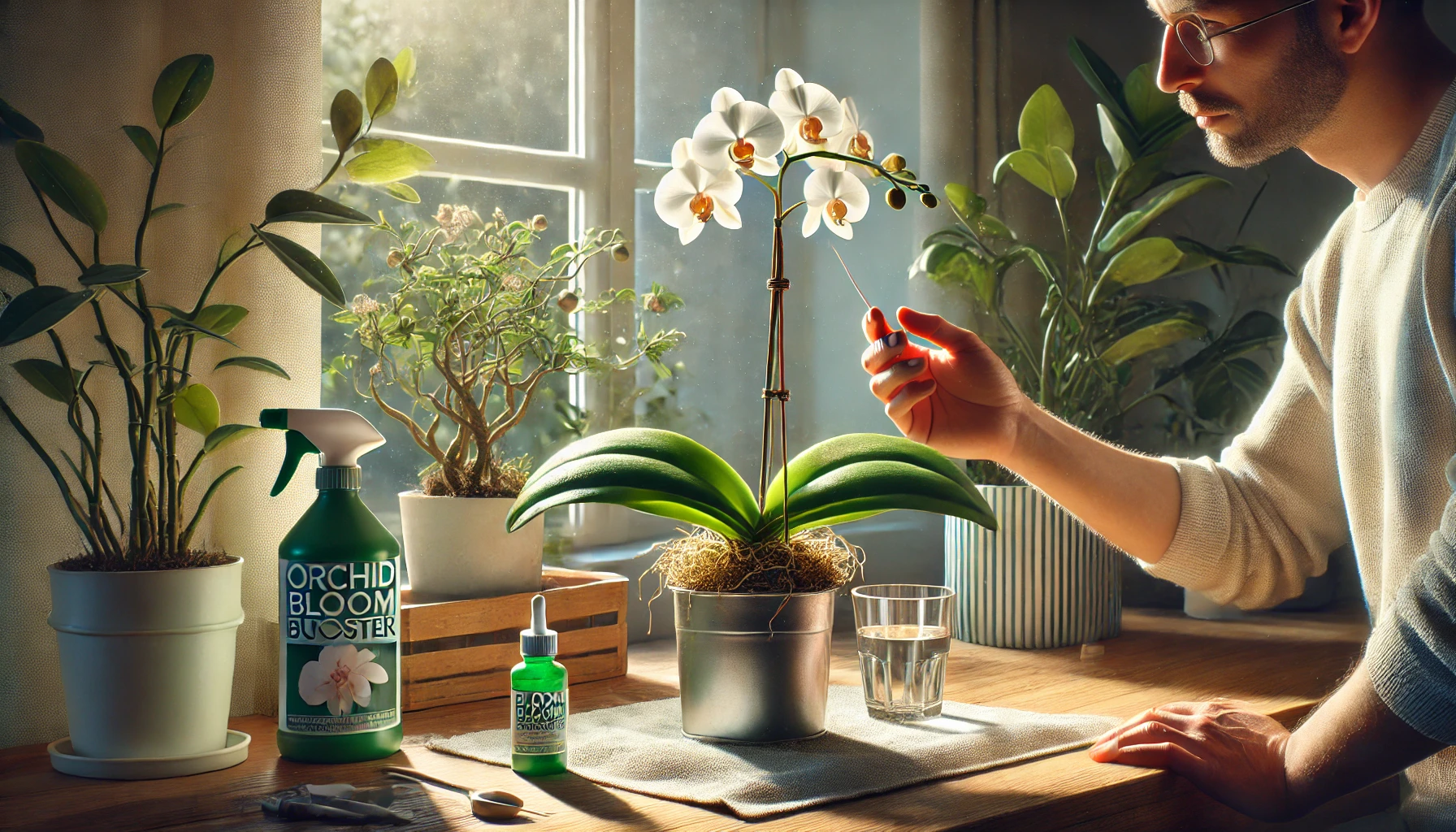It can be frustrating when an orchid refuses to rebloom, especially after months of care. While orchids naturally go through a resting phase, there are ways to encourage them to produce flowers again. The key is to replicate their natural conditions, providing the right balance of light, temperature, watering, and nutrients.
In this guide, we’ll explore why orchids stop blooming, how to stimulate new flower spikes, and what you can do to maintain long-lasting blossoms.
Why Did My Orchid Stop Blooming?
If your orchid’s flowers have fallen off and it hasn’t rebloomed for months, don’t worry—this is normal. After blooming, orchids enter a dormant period where they focus on growing new roots and leaves.
However, if months go by without a new flower spike, the issue might be:
- Insufficient light (one of the most common causes)
- Lack of temperature fluctuation between day and night
- Improper watering or fertilization
- Aging flower spike that needs trimming
Once you identify the cause, you can take steps to encourage a new bloom cycle.
Step 1: Increase Light Exposure
Orchids need bright, indirect sunlight to rebloom. If your plant is only producing leaves but no flowers, it may not be getting enough light.
Best lighting conditions for blooming:
- Place your orchid near an east-facing window to get gentle morning sun.
- If using a south or west-facing window, filter the light with a sheer curtain.
- If natural light is limited, use a full-spectrum grow light for at least 12 hours a day.
Signs of too little light:
- Dark green leaves (healthy orchids should have light green leaves).
- No new flower spikes forming.
Signs of too much light:
- Yellow or reddish leaves, indicating sunburn.
- Wrinkled or dry leaf texture.
Step 2: Create a Temperature Drop at Night
In their natural environment, orchids experience a drop in temperature at night, which signals them to bloom. You can mimic this by ensuring a 10°F (5°C) difference between day and night temperatures.
Ideal temperature conditions:
- Daytime: 65–75°F (18–24°C)
- Nighttime: 55–65°F (13–18°C)
How to achieve this:
- Move the orchid to a cooler room at night, away from heat sources.
- If indoors, keep it near a slightly open window (but avoid cold drafts).
- In warmer climates, place the orchid outdoors at night for a few weeks.
Step 3: Adjust Watering and Humidity
Orchids need proper moisture levels to bloom, but overwatering or underwatering can prevent flowering.
Best watering routine for reblooming:
- Water once a week in winter and twice a week in summer.
- Let the potting mix dry slightly between waterings.
- Use room-temperature water to avoid shocking the roots.
- Maintain humidity at 50–70% using a humidity tray or a room humidifier.
Signs of improper watering:
- Wrinkled leaves = under-watering.
- Mushy roots = overwatering.
- No new growth = lack of moisture balance.
Step 4: Feed Your Orchid Properly
A well-fed orchid is more likely to bloom. During the growth phase, orchids need a balanced fertilizer to develop strong roots and healthy leaves, followed by a bloom-boosting fertilizer to trigger flowering.
Fertilizing schedule:
- Use a 20-20-20 balanced orchid fertilizer at half strength once a week during active growth.
- Switch to a 10-30-20 “bloom booster” fertilizer when encouraging flowering.
- Stop fertilizing when the orchid enters dormancy (no new leaves or roots).
Step 5: Trim the Old Flower Spike (Or Leave It Alone!)
Deciding whether to cut the old flower spike depends on its condition:
✔ If the spike is green: Trim just above a node (the small bump on the stem). This may encourage a new flower branch.
✔ If the spike is brown and dry: Cut it at the base, as it’s no longer useful.
✔ If unsure: Leave it for a few weeks to see if new buds develop.
Some orchids bloom on the same spike multiple times, while others grow a completely new spike.
Step 6: Be Patient!
Orchids bloom naturally once or twice a year, and the process can take several months. If your orchid has healthy roots, strong leaves, and is receiving proper care, it will eventually bloom again.
Signs your orchid is about to bloom:
- A new flower spike starts growing from the base of a leaf.
- Small buds appear along the spike.
- The plant has new, healthy roots and leaves.
Once buds appear, avoid moving the plant too much, as changes in light or temperature can cause bud blast (where buds drop before opening).
Final Tips for Long-Lasting Blooms
- Keep the orchid in stable conditions (no sudden changes in temperature or humidity).
- Water carefully—avoid getting water on the buds to prevent rot.
- Support heavy flower spikes with a stake to prevent bending or breakage.
- Enjoy the blooms! Orchid flowers can last weeks to months with proper care.
By following these steps, you can encourage your orchid to bloom again and enjoy its stunning flowers year after year! 🌸✨
